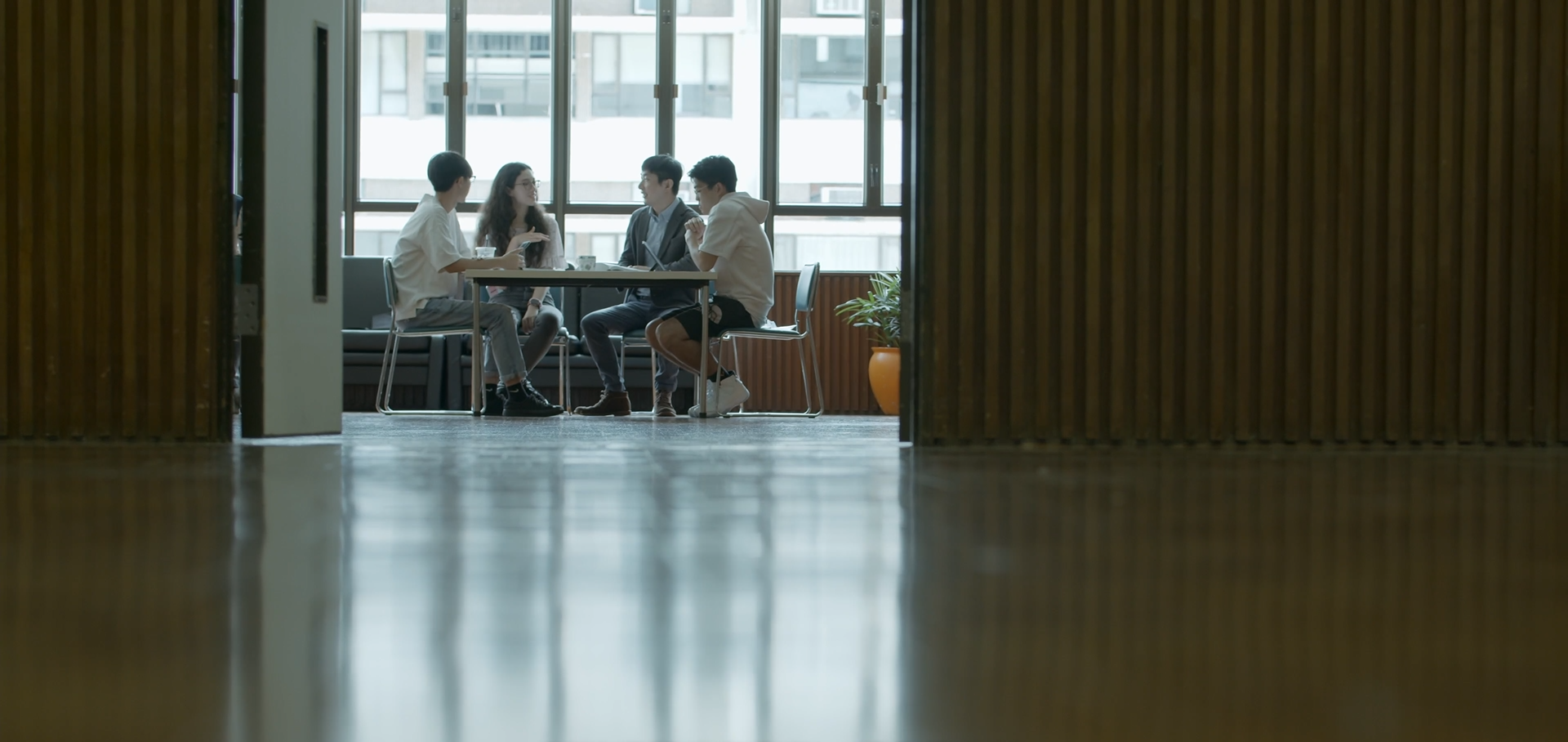

Abstracts and Bio
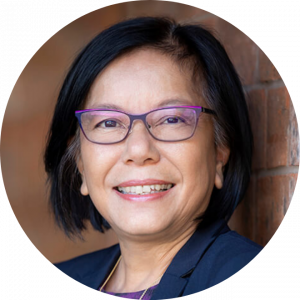
Nancy Yunhwa RAO
Distinguished Professor & Head of Music Theory,
Rutgers University
Mandarin Theater and Great China Theater in San Francisco–A view from 1924
Abstract
Using lyrics, artifacts, memoir, playbills, etc. from within the Chinese community, the paper considers the important history of two Chinatown opera theaters in San Francisco during its golden era of the 1920s. Attention is drawn to issues such as social memory, everyday life, and bodily performance to reveal how these opera performances at these theaters were as satisfying as it was meaningful. Various documents, recordings, and immigration files constitute the “archive” of Chinatown opera theaters, one that allow us to reimagine the theaters, the dynamic ways that opera were presented and the transnational route across Pacific that the performers travelled.
The Great China Theater first opened its door for performances of different operas daily all year long, with a roster of key professionals, such as playwrights, musicians, and scene painters. The stage designs and theatrical spectacle grew bolder and grander, showing influences from other entertainment; a record label of Cantonese opera was started. The opera culture also bore fruit in the younger generation, as seen in the increased participation of native-born Chinese Americans. Then the Mandarin Theater’s opening in 1924, the first Chinese theater building constructed after the 1906 earthquake and fire. From the elaborate architectural details, to fundraising activity, and to the city tax paid by the Mandarin Theater during the first ten months of the theater, it was clear that the theater was ambitious. By its fourth year in operation, the Mandarin boasted a Los Angeles branch, troupes in Mexicali and elsewhere, as it expanded its reach into the community, attracted superstar performers such as the actress Li Xuefang, and staged ever more grand productions.
Speaker’s Bio
Nancy Yunhwa Rao is Distinguished Professor at Rutgers University. She is the author of Chinatown Opera Theater in North America (2017), which has been recognized with book awards from American Musicological Society, Society for American Music, Association of Asian American Studies, and the Association of Recorded Sound Collection. Chinese translation of the book was published in 2021. Recent essays include Sino-Soundscape and Sinophone communities, Inter-Asia imaginings and sensibilities, and Transpacific musical circulation. Her next book, Inside Chinese theater: Community and Artistry in 19 century California, is forthcoming at Illinois University Press. Rao serves as the editor-in-chief of American Music.
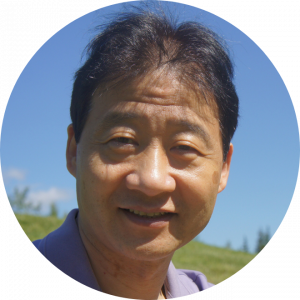
Siyuan LIU
Professor of Theatre
University of British Columbia
Revolutionary Avant-Garde Puppetry from Germany, through Japan, to China—A View from the Late 1920s
Abstract
In spring 1930, after a bitter split of the Chinese Communist Party (CCP) and the nationalist Kuomintang (KMT) in their joint revolutionary war against the northern war lords, the first CCP-led theatre group, the Shanghai Art Theatre Society, staged two performances in Shanghai with five plays, including an expressionist All Quiet on the Western Front. Although the Society was subsequently shut down by authorities, the leftist theatre movement subsequently took off, prompting the adoption of other European proletarian performance forms.
In the present essay, I zoom in on such an aspect of the group’s activity: modern proletarian puppetry. Most prominently advocated by Tao Jingsun, who translated All Quiet on the Western for the group’s second performance and edited the proletarian movement’s key magazine, with two special issues on “emerging literature” that included his translations, creations, and advocacy of puppet theatre’s unique revolutionary role, as a pistol with agility “unavailable to rifles and canons… [which] will become our most essential weapon.” Growing up in Japan and returning to Shanghai in 1929, Tao was heavily influenced by Tokyo’s modernist group the Puppet Theatre (Ningyō-za). It shocked Japan’s shingeki (modern spoken theatre) and art worlds with their 1926 puppet performance of Who Is the Biggest Fool? by the German Marxist playwright Karl August Wittfogel, through its theatricality and agitational power unimaginable by real actors in the heavily censored shingeki productions. It was followed in 1927 with a puppet production of German playwright Yvan Goll’s surrealist play Methusalem, or the Eternal Bourgeois, which was known for the German Dadaist George Grosz’s puppet-like costume design in the style of Dada collage of assembled bits and pieces of quasi-mechanical junk. These two productions by the Puppet Theatre attracted other Japanese artists to proletarian puppetry, including Murayama Tomoyoshi, a leading avant-garde-turned-proletarian designer, playwright and director with impactful connections to Chinese students in the Shanghai Art Society, including Tao Jingsun. Through such connections, the essay points to the ideological and artistic vocabularies shared by the worldwide proletarian theatre movement inspired by the Soviet Revolution, while also complicating the notion of “sharing” as the specific ideological and artistic environment in each country affected the dramatic/performatic circumstances.
Speaker’s Bio
Siyuan Liu is professor of theatre at the University of British Columbia and editor of Asian Theatre Journal. His published books include Xin Fengxia and the Transformation of China’s Ping Opera (author, Cambridge 2022), Transforming Tradition: The Reform of Chinese Theatre in the 1950s and Early 1960s (author, Michigan 2021), Rethinking Chinese Socialist Theatres of Reform: Performance Practice and Debate in the Mao Era (co-editor, Michigan 2021), Routledge Handbook of Asian Theatre (editor, 2016), Modern Asian Theatre and Performance 1900-2000 (co-author, Methuen 2014), The Methuen Drama Anthology of Modern Asian Plays (co-editor, 2014), and Performing Hybridity in Colonial-Modern China (author, Palgrave Macmillan 2013).
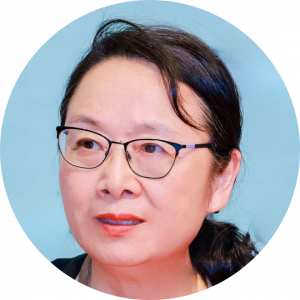
Xiaomei CHEN
Distinguished Professor Emerita of Chinese Literature,
University of California, Davis
The Jiang’an Years of the National Drama School: Where A Thousand Theatre and Film Artists Started — A View from 1939
Abstract
Established in 1935 by the KMT government, the National Drama School was dispersed in 1949, when part of its resources was later merged into The Central Drama School. During its 14 years of existence, the National Drama School had trained more about 1,000 theater, film, opera artists, who became leaders and key players in the PRC art world, such as Xie Jin in Film directing, Liu Housheng in drama criticism, Li Chang in stage design and so on. Its attached theater troupe provided hand-on training opportunities and creative outlet in its close to 200 plays, which included Western classics, Chinese scripts, with ancient stories and contemporary themes. During the Sino-Japanese war period, the drama school moved five times, from Nanjing, to Changsha, to Chongqing, to Jiang’an, to Beipei, a small town next to Chongqing, and finally to Nanjing in 1946, after the Japanese surrender. The Jiang’an period of six years, from 1939 to 1945, gave rise to the drama school’s most productive years with its highest achievements. This paper focuses on the six Jiang’an years of the drama school to examine its multi-cultural traditions stemmed from its faculty’s American training in theater, as seen in the career trajectory of Yu Shangyuan and Zhang Junxiang, and the hybrid style of Western plays and traditional Chinese theater as seen in the legacy of Cao Yu, Chen Baichen, and others. In all aspects of theater, such as theater building, management, advertising, stage design, lighting, custom, make-up, the drama school laid the foundations for the future theater development which culminated in the 1950s and 1960s in the PRC. This paper asked why one of the most productive periods of a drama institution could occur in the most challenging years of war-torn China when campus relocations, artist migrations, poverty, and lack of recourses had paradoxically spurred the most brilliant theater productions and artist training. In the larger scheme of things, this paper weaves institutional history, theater formation, repertory building, war and regional cultures, economic conditions, and aesthetic movements both in and out of China for a more complex history of theater art across ideological and political boundaries.
Speaker’s Bio
Xiaomei Chen is Distinguished Professor Emerita of Chinese and Comparative Literature at the University of California at Davis. She is the author of Occidentalism, Acting the Right Part, Staging Chinese Revolution, Performing the Socialist State. She is the editor of Reading the Right Text and Columbia Anthology of Modern Chinese Drama and co-editor, with Claire Sponsler, of East of West; with Julia Andrew, of Visual Culture in Contemporary China, and with Siyuan Liu, Hong Shen and the Modern Mediasphere in Republican-Era China. Her co-edited book with Tarryn Chun and Siyuan Liu, Rethinking Chinese Socialist Theaters of Reform was a winner of Excellence in Editing Award by the Association of Theatre for Higher Education (ATHE).

Tarryn CHUN
Assistant Professor, Department of Film, Television, and Theatre
University of Notre Dame
Stagecraft under Fire–Backstage in 1940
Abstract
In the opening stage directions of Foggy Chongqing (1940; originally titled The Whip), playwright Song Zhidi describes dense fog rolling into the main characters’ semi-subterranean living space. The annual foggy season and characteristic hillside architecture immediately evoke the play’s setting in China’s “fog capital” of Chongqing, but relative to theatre of the early 1940s, fog holds multiple layers meanings. On the one hand, during the Second Sino-Japanese War, it was only during the foggy season that aerial bombardments would halt long enough for theatrical performances (and everyday life) in the city to provisionally resume. Second, metaphorically, Song’s fog evokes the precarity and mental confusion that can be caused by living under wartime conditions and political uncertainties. Finally, from the perspective of stagecraft, fog belongs to a category of special effects that are technically challenging to create onstage and which found themselves the subject of debate during the war. Simply put: certain atmospheric effects can be created most realistically onstage with the aid of scenography, lighting, and special effects—all of which require specialized materials, equipment, and technical knowledge. Yet, at this moment in time, many Chinese theatre artists were turning to political theatre that served the war effort, national salvation, or the spread of communist ideas—and which often eschewed sophisticated technical components, or even physical stages. Taking Foggy Chongqing and other wartime plays as a point of departure, this paper will explore debates surrounding stagecraft and how the contestation over scenography, lighting, and special effects influenced theatre theory and dramaturgy at a time of great political exigency.
Speaker’s Bio
Tarryn Li-Min Chun is Assistant Professor in the Department of Film, Television, and Theatre at the University of Notre Dame. She is the author of Revolutionary Stagecraft: Theater, Technology, and Politics in Modern China (University of Michigan Press, 2024) and co-editor with Xiaomei Chen and Siyuan Liu of Rethinking Socialist Theaters of Reform: Performance Practice and Debate in the Mao Era (University of Michigan Press, 2022). Her work has appeared in as Modern Chinese Literature and Culture, Prism, Theatre Journal, Theatre Survey, TDR, and Asian Theatre Journal, and several edited volumes. She is the recipient of a National Endowment for the Humanities Fellowship (USA) and other awards.
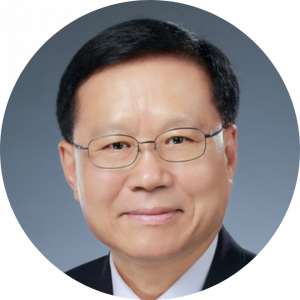
Kwok-kan TAM
Dean, School of Humanities and Social Sciences
The Hang Seng University of Hong Kong
The Socialist Discourse of Performativity—A View from 1956
Abstract
China has developed its theory of socialist art based on utilitarian principles since 1942 when Mao defined art and literature as service to the communist cause. However, there has not been any theorization with practice on how art can remain art and be elevated while serving a social(list) purpose until the year 1956 when China’s Ministry of Culture presented A Doll’s House as part of the celebration for the Year of World Peace. The performance was conducted by the China Youth Art Theatre on a commission of the Ministry of Culture. It is also a collaboration between China and Norway with an artistic director Gerda Ring invited from Oslo to advise the performance. In this performance, very sophisticated scenographic and choreographic/acting details were designed to produce ideological message via super impactful effects on the audience. The performance had lasting impact in China with a 1962 production of A Doll’s House in Shanghai following similar artistic designs, again winning the acclaim of the Shanghai audience. Following suit, the dramatist-theorist Li Jianwu proposed in 1963 a theory of socialist performative discourse which can be traced to the innovative practice invented in the 1956 performance of A Doll’s House, which starred actress Ji Shuping and scenographer Chen Yongjing, the noted artist couple that influenced China’s theatre for more than two decades. In this paper, I will cite examples from the 1956 staging of A Doll’s House to illustrate the seminal practice that began the quest for a theory and practice of Chinese performative discourse later developed by Li Jianwu.
Speaker’s Bio
Kwok-kan Tam is Chair Professor of English and Dean of Humanities and Social Science at the Hang Seng University of Hong Kong. He is former Head and current member of the International Ibsen Committee, University of Oslo, and Fellow of the Hong Kong Academy of the Humanities. He received his PhD in Comparative Literature from the University of Illinois at Urbana-Champaign. He has previously worked at the East-West Centre, Honolulu, the Chinese University of Hong Kong, and the Open University of Hong Kong, and has received fellowships at the East-West Center, National University of Singapore, University of Tokyo, Sophia University, University of Oslo, Stockholm University, and Friedrich-Alexander Universität Erlangen-Nürnberg. He has published extensively on Ibsen, Gao Xingjian, Anglophone literature, modern drama, Chinese film, and gender in literature. His recent publications include the books, Sight as Site: Art, the Museum and Representation (2024), Performance Arts: Research in the Age of Digital Revolution (2023), Fate and Prognostication in the Chinese Literary Imagination (2020), Ibsen, Power and the Self: Postsocialist Chinese Experimentations in Stage Performance and Film (Novus Forlag, 2019), Chinese Ibsenism: Reinventions of Women, Class and Nation (Springer, 2019), and The Englishized Subject: Postcolonial Writings in Hong Kong, Singapore and Malaysia (Springer, 2019).

Emily WILCOX
Associate Professor of Chinese Studies College of William & Mary
Dancing Inter-Racial Solidarity: Embodied Critiques of US Anti-Black Racism and Police Violence in the Chinese Dance Drama Fires of Fury are Burning (1964)
Abstract
Revolutionary internationalism was an important, if somewhat marginal, theme in Chinese dance choreography in the early years of the PRC, starting with the Central Academy of Drama’s 1950 ballet Peace Dove about the international peace movement and dance dramas about the Korean War in the early 1950s. By the time of the Sino-Soviet split and China’s increased emphasis on Third World solidarity in the mid-1960s, dance works about revolutionary internationalism reached a new prominence, and in 1964-1965, there was an explosion of new choreography portraying revolutionary activities in Asia, Africa, Latin America, and their diasporas. In this talk, I discuss one work produced in 1964 by the People’s Liberation Army General Political Department Song and Dance Ensemble (Zongzheng gewutuan) titled Fires of Fury Are Burning (Nuhou zai ranshao), of which a rare full-length 20-minute color video recording is still extant, climaxes in a rousing scene in which African Americans heroically beat up caped members of the Ku Klux Klan in front of a flaming cross and the US Capitol building. This scene appears in a longer narrative that denounces police brutality and exposes links between US policing and white supremacist organizations, invoking themes still very relevant today. Engaging recent scholarship on the intellectual history of Tricontinentalism, I consider how this and other dance works of the time articulate an early version of leftist South-South solidarity.
Speaker’s Bio
Emily Wilcox is Margaret Hamilton Professor of Modern Languages and Literatures/Chinese Studies at William & Mary and a 2024 Guggenheim Fellow in Dance Studies. She is author of Revolutionary Bodies: Chinese Dance and the Socialist Legacy (University of California Press 2018; winner of the 2019 Dance Studies Association de la Torre Bueno Prize®; Chinese translation Fudan University Press, 2023). Wilcox is co-editor of Corporeal Politics: Dancing East Asia (University of Michigan Press, 2020), Inter-Asia in Motion: Dance as Method (Routledge, 2023), and Teaching Film from the People’s Republic of China (MLA, 2024). Wilcox co-edits the book series “China Understandings Today” with University of Michigan Press and “Dance in the 21st Century” with Bloomsbury.

Xing FAN
Associate Professor
Centre for Drama, Theatre, and Performance Studies, University of Toronto
Model Theater at its Peak — A View from 1970
Abstract
On 1 October 1970, the movie version of Taking Tiger Mountain by Strategy (a modern Beijing opera production) was released to commemorate the national day of the People’s Republic of China, and the production’s July 1970 stage performance was approved as its final stage version. This production was one of a group of eighteen works that were designated as Model Revolutionary Works (geming yangbanxi)—exemplary models of literature and art—and has often been discussed as “the model of Model Works.” How do Model Works mark the culmination of a massive cultural reconstruction led by the Chinese Communist Party since the 1940s? How did theatre practitioners negotiate with prevalent ideology while making artistic decisions in their aesthetic pursuits? And what are some of the legacies of Model Works in the history of modern Chinese theater culture? In this presentation, we will use Taking Tiger Mountain by Strategy as a case study, tracing its creative process that began during the 1950s, zooming in on some challenges and strategies in portraying proletarian peasants, workers, and soldiers in the form of Beijing opera, and discussing possible reasons for the continuing passion for the Tiger Mountain, including Tsui Hark’s 2014 action film.
Speaker’s Bio
Xing Fan is Associate Professor at the Centre for Drama, Theatre, and Performance Studies at the University of Toronto. She is the author of Staging Revolution: Artistry and Aesthetics in Model Beijing Opera during the Cultural Revolution. Xing’s research interest includes art and politics, gender and performance, history and historiography, sound studies and theatre, and theatre pedagogy.

Paul FUNG
Associate Professor
Department of English, The Hang Seng University of Hong Kong
From Stanislavsky to the Fifth-Generation Cinema: A Theatrical Transformation of Gong Li in Zhang Yimou’s Film—A View from the 1980s
Abstract
In 1979, the Chinese film director Nuanxin Zhang published the famous essay, ‘The Modernization of the Language of Film’ with her then husband Li Tuo. One of the key positions upheld by the authors is that new Chinese cinema should abandon the use of dramatic conflict in film. Influenced by the recent development of Italian Neorealism and the French New Wave, Zhang advocates a new cinema which is conscious of its artistic form and captures the ordinary lives of Chinese people with a realistic and less intrusive style. To what extent do the Fifth-Generation film directors in the 1980s realize Zhang’s proposition? To what extent dramatic conflict is a hindrance to the birth of a new cinema? This paper takes the world-acclaimed actress Gong Li as a case in point. As a graduate of Central Academy of Drama (1989), she was heavily influenced by the training method invented by theatre practitioner Stanislavsky. This paper examines Gong Li’s transition from a theatre student to a film actress. It focuses on her performance in Red Sorghum (1987), Ju Dou (1990) Raise the Red Lantern (1991), comparing the conflicts as presented in dramatic and filmic performances.
Speaker’s Bio
Paul Fung is Associate Professor at The Hang Seng University of Hong Kong. His primary focus is on the nineteenth-century writer Fyodor Dostoevsky. His monograph, Dostoevsky and the Epileptic Mode of Being, examines the novelist’s poetics in relation to his life-long illness. His secondary focus is cinema. He has published on the Taiwanese director Edward Yang. His current project investigates the concept of evil in Dostoevsky and Emmanuel Levinas.

Barbara MITTLER
Chair in Chinese Studies
the Center for Asian and Transcultural Studies, Heidelberg University
Whose Music? Authenticity as Weapon: Turandot in China—1998 and Beyond
Abstract
In the late summer of 1998, Zubin Mehta is taking Puccini’s Turandot to China—staged in the Forbidden City, in a “truly authentic Chinese” performance, as he says, and not just he… What we can observe here, is a—slightly paradoxical—unisono of voices: since for 70 years after its first performance in 1926, Puccini’s opera—which makes use of a number of original Chinese tunes, foremost among them Jasmine Flower 茉莉花Molihua, that Chinese melody known to him from a music box belonging to a friend who was fond of China—this opera had not been performed in China, and for obvious reasons. Turandot, the beautiful but bloodthirsty princess who beheads all her suitors unless they solve her riddles, is a typical example of the kinds of characters that featured in so-called “exoticist “works of the early 20th century. They were shaped by fear of the “sinister Oriental,” emblematic for what came to be known as the “Yellow Peril” discourse. While Turandot is in fact a Persian name meaning “girl from Turan,” Puccini’s choice of the Chinese melody is, of course, a clear clue, and Carlo Gozzi’s material brings equally clear allusions to the Mandarin, to Ping Pang Pong, to the Great Wall and the Imperial Palace, and thus elements of European-imagined “Oriental despotism” that must “obviously” be in China. Turandot thus plays with elements of a European discourse of fear, exclusion and hate, which is also read accordingly in China—until Zubin Mehta brings Turandot back—in cooperation with Zhang Yimou, in what they jointly call an “authentic” performance. This paper will disentangle how claims for authenticity have been use in China’s transcultural operatic encounters.
Speaker’s Bio
Barbara Mittler holds a Chair in Chinese Studies at CATS, the Center for Asian and Transcultural Studies at Heidelberg University which she helped co-found in 2019. For many years, she has co-directed the Heidelberg Centre for Transcultural Studies (HCTS, formerly the Cluster of Excellence—Asia and Europe in a Global Context, 2007-2019). She began her studies (Sinology, Musicology, Japanese) at Oxford (MA Oxon 1990). Her PhD & Habilitation are from Heidelberg (1994/1998). Her research focuses on the politics of cultural production in (greater) China covering a range of topics from music to visual and historical print media in China’s long modernity. Among her booklength publications are Dangerous Tunes: The Politics of Chinese Music in Hong Kong, Taiwan and the People’s Republic of China since 1949, Harrassowitz 1997; A Newspaper for China? Power, Identity and Change in China’s News-Media, 1872-1912, Harvard University Press, 2004; A Continuous Revolution: Making Sense of Cultural Revolution Culture, Harvard University Press, 2012 and a co-authored book with historian Thomas Maissen Why China did not have a Renaissance and why that matters—an interdisciplinary Dialogue, De Gruyter 2018. She has recently concluded a book-length study on women’s magazines, Portrait(s) of a Trope: Making New Women and New Men in Chinese Women’s Magazines, 1898-2008, and is currently working on a visual biography of Mao, The Art of Reading Mao: The Making of a Global Icon as well as a monograph “And there is only one Lang Lang…”—Chinese Musicians on the Global Stage: a Transcultural.She is member of the LEOPOLDINA and the Heidelberg Academy of Sciences.
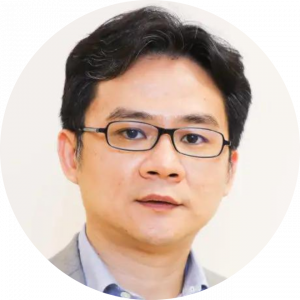
Isaac HUI
Associate Professor
Department of Translation, Lingnan University
Cantonese translations of the works of Shakespeare and Ben Jonson and early modern theatre in China and Hong Kong–A View from 2005
Abstract
In 2005, the Centre for Translation of HKBU published two Cantonese translations of Shakespeare’s dramas, namely, The Comedy of Errors and King Lear, by Prof. Jane Lai. In 2010, her Cantonese translation of Othello was published. In 2012, Prof. Lai’s translation of Ben Jonson’s Volpone was performed on stage in Hong Kong as Volpana: A Comedy. The theatre company’s website suggests that it is “a feminist play” inspired by Jonson’s Volpone. According to the research of Dr. Shelby Chan, Jonson’s Volpone was previously translated by Mr. Rupert Chan and was performed in Hong Kong at least three times by Chung Ying Theatre in 1991. In other words, Jonson’s Volpone was translated and performed in Hong Kong at least twice since the 1990s. Comparing with Shakespeare, it can be safely said that Jonson’s works were much less translated into Chinese, whether it’s in the Chinese mainland, in Hong Kong, or in Taiwan. Preliminary research suggests that Ben Jonson exists more in Chinese in academic research and discussions rather than in translation. Even if there are translations of Jonson in Chinese, they are usually done in excerpts in academic studies written in Chinese. This paper attempts to explore how much Chinese readers/audience know about Shakespeare’s contemporaries through the example of Jonson, examining how Jonson was translated, exported, Abstract: represented, and presented on stage in the Chinese world.
Speaker’s Bio
Isaac Hui is Associate Professor in Department of Translation at Lingnan University, Hong Kong. He is the author of Volpone’s Bastards: Theorising Jonson’s City Comedy (Edinburgh UP, 2018), and has published a range of articles on Ben Jonson, Shakespeare, comedy, and on studies of English translation of Chinese literature. His current research projects examine the translation and imitation of classical literature (such as Horace, Juvenal and Seneca) in early modern English literature, and the translation of Chinese literature as world literature.

Anna TSO
Head & Associate Professor, Department of English The Hang Seng University of Hong Kong
Shakespeare’s Macbeth in Hong Kong 2017: A Jungian Interpretation?
Abstract
For the niche field of Shakespeare studies, 2016 was a special year because it marked the 400th anniversary of William Shakespeare’s death and legacy. To take part in the yearlong global celebration of Shakespeare 400, Tang Shu-wing, the renowned theatre director who won thrice at the Hong Kong Drama Awards, created an innovative Cantonese adaptation of The Tragedy of Macbeth premiered at London’s Globe Theatre on 17-23 August 2015, featured in the Hong Kong Arts Festival on 16-20 March 2016, and then performed on 16 June – 2 July 2017, touring around key drama festivals such as the Sibiu International Theare Festival in Romania, Neuss International Shakespeare Festival in Germany, and Itaka Shakespeare Festival in Serbia. With a view to analysing how Tang’s world-acclaimed 2017 touring version cleverly adapts Shakespeare’s Macbeth, this paper uses Carl Jung’s psychoanalytic approach and critical discourse analysis to investigate the dialogue and conversation between Macbeth and Lady Macbeth in Tang’s The Tragedy of Macbeth (2017). The discussion of the paper is concerned with Macbeth’s hesitation and oscillation between his honourable Persona, his Shadow (dark desires of his psyche), his unrepressed Anima, and Lady Macbeth’s manipulative Animus, all of which continually place his self-identity at risk.
Speaker’s Bio
Anna Tso obtained her PhD in Applied Linguistics from the University of Birmingham, England. Currently, she heads the Department of English and directs the BA (Hons) in English at The Hang Seng University of Hong Kong. Her research interests lie in the intersection of applied linguistics, children’s literature, Shakespeare, and digital literacy. She is the co-author (with Lau, L. C.) of Teaching Shakespeare to ESL Students: The Study of Language Arts in Four Major Plays (Singapore: Springer, 2016). She has also published papers and given seminars on transmedia Shakespeare and Shakespeare for children.

Frederick LAU
Chair and Professor of the Music Department and Director of the Center for Chinese Music Studies, The Chinese University of Hong Kong
Trump on Stage: Cantonese Opera in Hong Kong—A View from 2019
Abstract
The historic reunification of Hong Kong with Mainland China has significantly reshaped both the political landscape and the performing arts in the city. Cantonese opera, once a popular genre of the Guangzhou-Hong Kong-Macau area, has taken on a new identity in post-handover Hong Kong, with China now serving as the cultural center.
The Cantonese opera production Trump on Show, composed in 2019, exemplifies this evolving landscape, capturing the complex sociopolitical ethos of the city. This talk will explore several key questions to better understand Hong Kong’s transformed cultural landscape: What are the novel elements in contemporary Hong Kong Cantonese opera? How do traditional and new forms relate? In what ways do these new works articulate the changing environment? By analyzing “Trump on Show” and other recent Cantonese opera innovations, this talk aims to contribute to our understanding of how China is being conceptualized in post-handover Hong Kong.
Speaker’s Bio
Frederick Lau is Chair and Professor of the Music Department and Director of the Center for Chinese Music Studies at the Chinese University of Hong Kong. He is the author of Music in China and co-editor of China Sound Abroad: Migration, Mobility and Modernity; Making Waves: Traveling Musics in Asia and the Pacific; Vocal Music and Cultural Identity in Contemporary Music: Unlimited Voices in East Asia and the West; and Locating East Asia in Western Art Music. Prior to teaching in Hong Kong in 2018, Lau held professorial positions at the University of Hawaiʻi at Mānoa and Cal Poly State University in California.
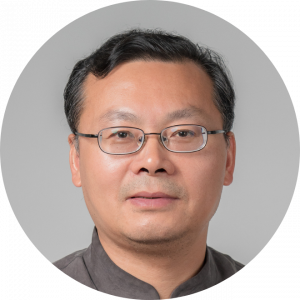
Chengzhou HE
Distinguished Professor of English and Drama at Nanjing University School of Arts and School of Foreign Studies
Aesthetic Breakthrough and Cultural Intervention in Two Modern Kunqu Plays — A View from 2020
Abstract
This article investigates two recent modern kunqu productions, Dang Nian Mei Lang (The Young Mei Lanfang) and Qu Qiubai (The play’s title is the name of its protagonist Qu Qiubai), both produced by Jiangsu Kunqu Theatre House. Despite the obstacles faced by kunqu during its process of modernization, these two productions nevertheless have accomplished aesthetic breakthroughs – a unique form of fictional realism on the stage, implicit ways of conventionalization, and the incorporation of fashion elements on stage. Meanwhile, these impressive aesthetic innovations signal as well as facilitate kunqu’s re-entry into the landscape of contemporary Chinese theatre as a forceful agent of cultural intervention.
Speaker’s Bio
Chengzhou He is Yangtze River Distinguished Professor of English and Drama at Nanjing University School of Arts and School of Foreign Studies and Foreign Member of Academia Europaea (the Academy of Europe). His research focuses on modern drama, performance studies, comparative literature, and critical theory. He won the Ibsen Prize in 2002 and was former President of the International Ibsen Committee. He is the author of Henrik Ibsen and Modern Chinese Drama and A Theory of Performativity (表演性理论).

Stan LAI
Renowned playwright and director
Making Theatre in the Chinese-speaking World, 1984-2024
Abstract
I have been blessed to have a long and continuous career, in diverse environments, under shifting political and cultural backdrops. This presentation will bring the audience through a creative journey that spans five decades, starting in Taiwan, and now based in Shanghai, with stops in Hong Kong, Singapore, and the U.S. I will highlight the diverse creative choices and strategies spurred by different inspirations and circumstances throughout the stages of my career, as a reflection on the larger context of artists making theatre in the Chinese speaking world. From my first improvisation-heavy work with my students in Taipei, to the forming of my theatre group, Performance Workshop, I will trace my path through the earlier work, which is more social and politically-based, to an inward-facing creative direction that is best manifest in A Dream Like a Dream and has grown to this day. Making theatre in the Chinese speaking world is not just about writing and directing plays. It is also about projects that involve communities, audiences and artists. I will also talk about endeavours such as Theatre Above, the Wuzhen Theatre Festival and the Huichang Theatre Village, as well as my most recent work, of which there are many.
Speaker’s Bio
“The best Chinese language playwright and director in the world.” (BBC) “The major contemporary Asian playwright of his time, perhaps of all time.” (Robert Brustein). Starting in Taiwan, Lai’s 38 original plays feature milestones such as Secret Love in Peach Blossom Land, The Village, and A Dream Like a Dream that can be seen in current performance, or read in Chinese (16 plays, CITIC, Beijing) or English (12 plays, University of Michigan Press). He is also a long-time educator with a PhD from U.C. Berkeley and a Co-founder of the Wuzhen Theatre Festival and Huichang Theatre Village. Theatre Above, Shanghai, is dedicated to his works.
Contact Us
For further information about the department, our programmes or services, please get in touch.
About Us
The Department of English offers a Bachelor of Arts (Honours) in English Programme which is unique in Hong Kong as it strategically combines English Studies, Business Studies and General Education, with the objective of training students to adapt to a diverse range of situations and skills for the workplace.

